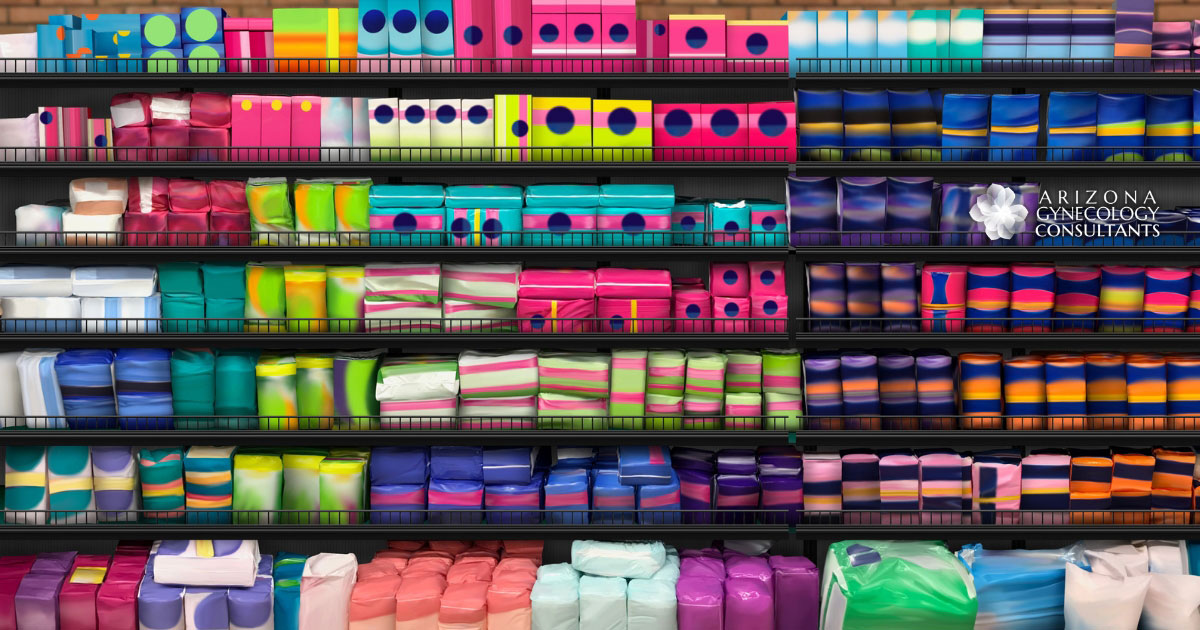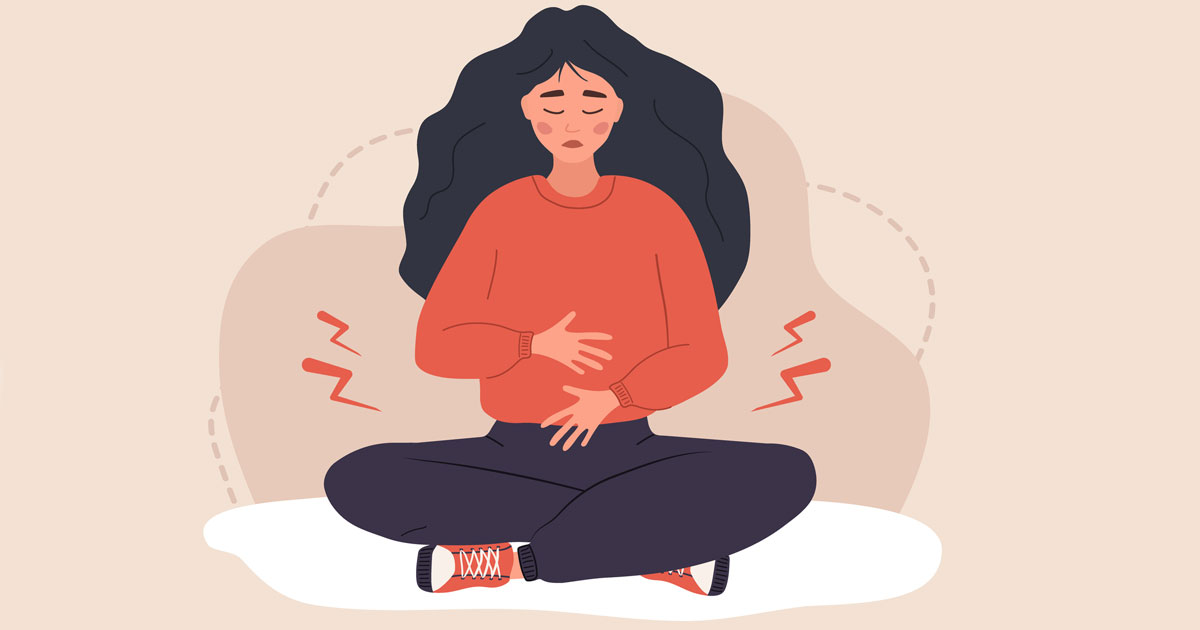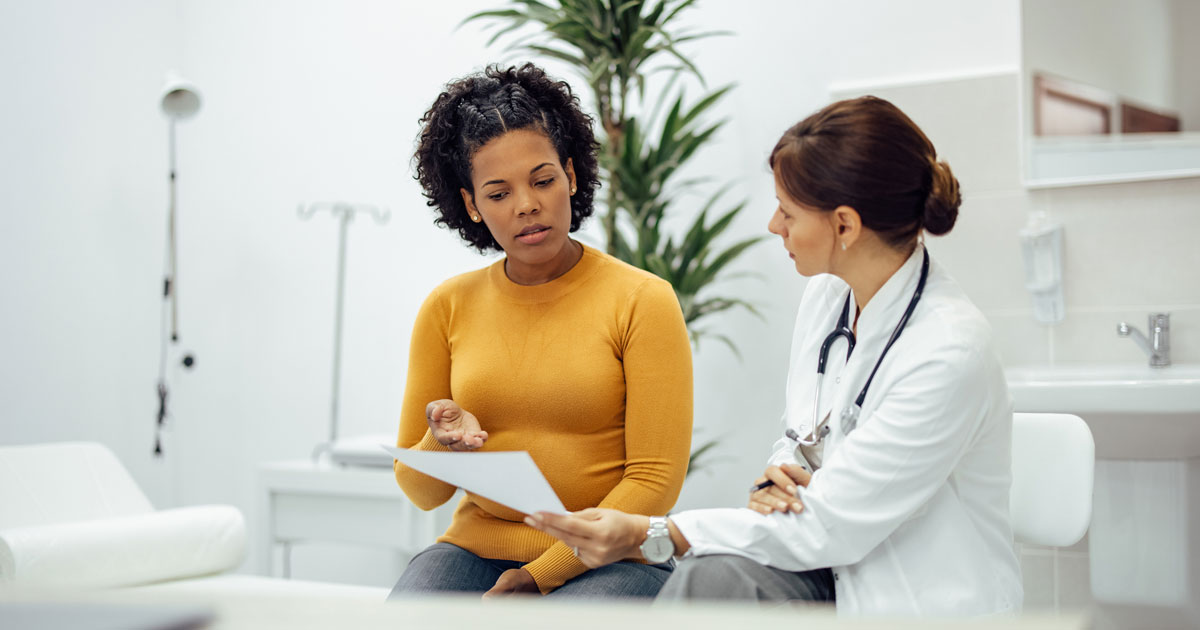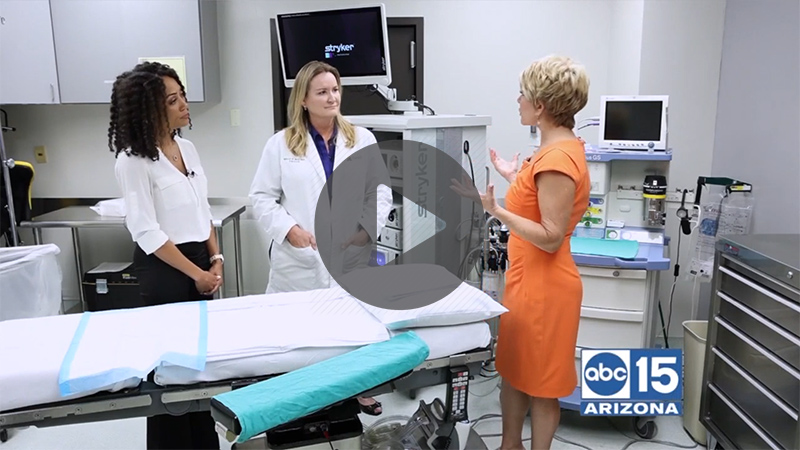It’s no secret that periods can be inconvenient. Plus, beyond the typical period and its symptoms, accompanying painful health conditions can impact your life more than just one week out of the month. Not to mention, you’ll also need to fork out cash on a consistent basis just to address the bleeding aspect of menstruation – and many of the standard options aren’t all that good for your body.
If you’re a person with a period facing yet another of the nearly 500 periods you’ll likely have in your life, you know just how imperfect the standard options can be. But, did you know that tampons and pads are far from the only period solution available? Deviating from typical period products to an alternative that works for you may have positive results on your life, your health, and your wallet.
Exploring Menstrual Products: the Basics

Of course, most of us think of pads or tampons when it comes to containing menstrual bleeding. These have improved over the years, and there are now multiple different options as far as size, absorbency level, and even some that use minimal packaging materials or biodegradable products. However, as prevalent and common as these goods are, they are not without their potential harms and downsides.
Disposable Sanitary Pads
Pads, also called sanitary napkins, are disposable and absorbent protective pads that you can easily stick to your underwear with an adhesive backing. They’re available in a variety of lengths and absorbencies and are meant to be changed every couple of hours. Some even come with wings or other features meant to help them stay in place (a marked improvement from the original belt and pad combo women used before the invention of the adhesive backing).
However, many pads have fragrances or other chemicals that can irritate your skin or affect your pH levels. They can also shift over time, and have a tendency to be bulky under clothing and for athletic activity. Disposable pads also aren’t an option when swimming. Disposable menstrual napkins also contain plastics and bleached fibers, and often use excessive packaging that is not eco-friendly.
Tampons
Tampons are dense, cylindrical units of material, usually made of either cotton, rayon, or a mixture like that used in pads. They are inserted into the vaginal canal and absorb blood internally until their replacement every few hours. They’re available in a variety of absorbencies and are discreet, compact, and convenient for swimming, exercising, and sports.
However, they are sometimes uncomfortable and may be drying or irritating to the vagina. Also, like pads, they are also a large contributor to landfills across the country, and while some environmentally conscious options exist (e.g., organic materials, plastic-free applicators), tampons still pile up in the ecosystem and take a very long time to degrade. Some materials are far from natural, including bleached cotton and rayon.
Most notably, tampons carry the risk of toxic shock syndrome (TSS) if left in place too long. While this is a rare condition, it is extremely dangerous and can be life-threatening. To avoid your chances of suffering TSS, avoid high absorbency tampons and do not wear them for extended durations, including when going to bed.
The Ecological and Biological Harm of Traditional, Single-Use Menstrual Products
Menstruating individuals, who have little choice in this bodily process, will spend close to $13,000 on products for their period on average during their lifetime. This is not a negligible expense by any means. Worse, the constant need to throw away and replace means menstruating individuals are consigned to this expense for decades on end.
The harm isn’t just financial. On average, each person throws out more than 10,000 single-use products over the course of their life, adding to the yearly total of 200,000+ tons of plastic waste from these products. The majority of traditional period products include plastic and are not biodegradable. These disposable goods are estimated to take around 500 to 800 years to fully decompose.
In addition, the menstrual hygiene products that are the most readily available to the public, such as tampons and pads, frequently contain harmful residual chemicals and other agents. These include bleach from whitening the material, dyes, leftover pesticides and toxic metals from cotton cultivation, phthalates to strengthen plastic, odor-neutralizers, and fragrance.
The chemicals included in these products can be damaging to water sources and take centuries to break down. So, imagine the risk they pose when inserted during menstruation by the 50-86 percent of women in the US who report using tampons. These chemicals are potentially irritating and chemically impactful during direct contact with pads, and the vagina’s permeability can allow harmful agents to be absorbed directly into the bloodstream during tampon use.
Alternative Menstrual Products to Tampons and Pads

Certainly, the traditional period product options are readily available, easy to purchase, straightforward to use, and have an extensive presence in our culture. However, as we know, these limited options aren’t always the best for the environment or our bodies. That’s why it’s worth learning about sustainable menstruation and alternative period products.
Sustainable menstruation entails consideration of the adverse effects disposable products – even those with better or more biodegradable materials – can have in contributing to landfills and oceans. While it’s not always convenient or a viable option to venture into alternative, sustainable products for menstruation, if one of these items can work for you, you may save money and improve your health in the long run. You’ll also help stem the flow of disposable products into our landfills.
Consider these sustainable, safe options.
Reusable Cloth Pads
This alternative period product is very similar to disposable pads in shape and size but entirely composed of absorbent fabric that can be washed with the rest of your laundry. Cloth sanitary napkins also tend to absorb more blood than their disposable counterpart. Like disposable pads, they are designed to be changed every few hours but stay firmly in place with a buttoning mechanism for the time in between.
This sustainable menstrual product is ideal for those who don’t wish to insert period protection, as well as for those who want a failsafe backup for their insertable products. Despite a higher price tag upfront than the average box of disposable pads, this option also saves you on monthly expenses since the cloth is durable and washable. Their reusable quality also prevents more unnecessary packaging and pads that aren’t kind to the earth. You can find reusable cloth pads in numerous styles and a range of absorbency levels and sizes. These reusable pads also tend to be more breathable, flexible, and less likely to feel bulky or feel lumpy under clothing.
However, like traditional pads, reusable pads may not be ideal for athletes or days at the beach. Cloth sanitary napkins are vulnerable to stains if washing is delayed and may be messy to change and hold onto while outside the house (though this is easily solved with a small, waterproof bag). They can also be a bit of an investment before saving on long-term costs, and some available designs (e.g., two interlocking parts, tying) can be tricky or inconvenient for some individuals.
Menstrual Cups and Discs
Menstrual cups have become increasingly popular in recent years, largely due to their potential to be in place for much longer than traditional period products. Some are capable of safe wear without being emptied for up to 6-12 hours (depending on individual flow). These silicone or rubber cups are flexible and meant to be folded and inserted, similar to a tampon. Within the vaginal canal, this cup creates a firm seal to collect blood, almost completely eliminating leakage before it’s time for removal. To remove, you’ll simply tug gently and pour the contents into the toilet, then thoroughly rinse the cup so it’s ready to be used again right away. Keep in mind that not all period cups are multi-use, so make sure to choose one that fits your preference before purchasing.
This method offers a sustainable and straightforward product that’s reusable, saves on monthly purchases, is small and discreet, and requires no multiples to switch out. Menstrual cups are ideal for those looking for an alternative period product that doesn’t take up space in their underwear or bunch up their clothing, people who are active and want to move freely without feeling a period product, and those who want to have sex on their period without the blood. Period cups also don’t impact your natural pH like tampons, cause a noticeable lingering blood smell like pads, or dry you out on lighter flow days.
There are a few drawbacks, depending on your preferences. Application and removal can be messy and difficult for some, and those with heavy flows may find the cup isn’t enough to avoid leakage. In addition, the investment is cost-effective over time, but the initial purchase may be pricey for some. There is a slight chance for TSS if cups are not used per instructions, but most agree that it is even lower than that posed by tampons. Menstrual cups may not be a good fit for individuals with fibroids, vaginismus, an IUD that is susceptible to dislodgement, or a latex allergy, as some cups contain this ingredient (always read the label if you have an allergy).
Period discs are a similar concept as the cup, except the disc shape sits above the cervix instead of below as a cup does. Discs also allow for up to 12 hours of protection and mess-free sex. This product method mainly comes in disposable form, so it requires repurchasing, but reusable options are beginning to hit the market.
Absorbent/Padded Underwear
Menstrual underwear, or period panties, are another great option for people who don’t like insertable menstrual products but also don’t want the added fuss of putting a pad on and replacing it after a few hours. This option looks and feels just like regular underwear but is made of materials specifically manufactured to soak up blood with no leak-throughs.
This option is sustainable because of its reusable quality that doesn’t require repurchase/replacement for years. You can change menstrual underwear as you feel comfortable – just wash them along with your other underwear, and they’ll be ready to use again once they’re clean. There are several inexpensive styles and designs available on the market, although those with added functions or higher absorbencies tend to increase in price compared to regular underwear. Regardless of the type, you’ll experience great absorbency that feels dry on the skin without the bulk or shifting of a pad.
The cons of period underwear are relatively few. They may not be a reliable option for people with heavy flows, and the various styles (and sizes) available across brands may mean a bit of trial and error period before you find the one that works best for you. Even if you find your favorite right away, they are an investment. You’ll also need to bring along a small wet bag if you anticipate the need to freshen up while on the go.
Sponge Tampons
Sea sponges can be inserted to absorb blood flow in a similar fashion to traditional tampons. If this sounds like an alternative menstrual product you’d like to try, it’s advantageous to make sure it is a natural sea sponge. Using a synthetic or dyed sponge can be even more risky and dangerous to your health than a traditional tampon.
Quality, natural sponges are reusable, with some lasting up to six months if properly used and regularly cleaned. Natural sponges are also less likely to have adverse effects like irritation compared to traditional tampons or pads that contain chemical additives. Sponge inserts are also less expensive than some other reusable alternative period products can be.
They aren’t without their caveats, though. Sponge material isn’t sterile, still carries the risk of TSS, and can be vulnerable to rips and tears during removal. Removal can also be messy since you don’t pull a string but instead use your fingers. They also need to be wetted before being inserted and require rinsing every three hours. Properly caring for natural sponge tampons involves washing them thoroughly and letting them dry completely before returning them to storage after your period has ended.
Free Bleeding
Free bleeding is self-explanatory. It involves going about life during your period with no protective barriers or measures to prevent blood from flowing. It’s not for everyone and can be cause for public concern if you are free bleeding while out and about.
If you’re in a position to free bleed and it’s what works for you — don’t hesitate to give it a try. Keep in mind that dried blood has the potential to be infectious, so minimal maintenance and attentiveness are still needed for your health and safety. Additionally, any surfaces that end up bloodied will require adequate disinfection to avoid the chance of transmitting any viruses. Potential downsides are stained clothing and other fabrics such as furniture or bed sheets; immediate treatment with cold water can help lessen the severity of staining.
Why Your Gynecological Health Is Important

Just like it’s crucial to take care of your body as a whole, it’s equally crucial to remain informed about your reproductive health. Gynecologists are specifically educated in all parts of the female reproductive system, including its needs, its potential issues, and how to prevent them. This focus and attention, coupled with comprehensive gynecological care, can catch serious problems early, notice symptoms and fluctuations your general doctor might not, and potentially explain issues you weren’t even aware were related to your reproductive system.
At Arizona Gynecological Consultants, our team cares about the person behind the patient. Our qualified team of professionals aims to treat you holistically and adjust your specialized treatment as your needs evolve. We’re here to listen and answer any questions you may have. Get in contact with us to schedule regular gynecology appointments and stay on top of your health.

Founder and Medical Director of ARIZONA GYNECOLOGY CONSULTANTS
Dr. Kelly Roy is a specialist in surgical gynecology and advanced laparoscopy (and hysteroscopy). She is a long-time resident of Arizona and obtained her Bachelor of Science degree in Biomedical Engineering at Arizona State University before finishing her Doctorate of Medicine at the University of Arizona in 1997.
Dr. Roy completed her residency in Obstetrics and Gynecology at the then “Banner Good Samaritan Hospital” (now Banner University Medical Center), in Phoenix Arizona in 2001.
Well known for her teaching and surgical ability, she is on the faculty at the residency program at both Banner University Medical Center and Saint Joseph’s Hospital in central Phoenix and is a Clinical Assistant Professor of Medicine at the University of Arizona College of Medicine, Phoenix Campus. Dr. Roy has taught advanced surgical techniques to medical students, residents, fellows and colleagues for over 15 years.
Dr. Roy is also a consultant to the medical device industry and has participated in the design and clinical testing of many instruments and surgical devices available on the world-wide market today.
Read More About Dr. Kelly Roy, MD | WebMD Profile | Health.USNews.com Profile | Current Obstetrics and Gynecology Reports: TFA with the Sonata System








